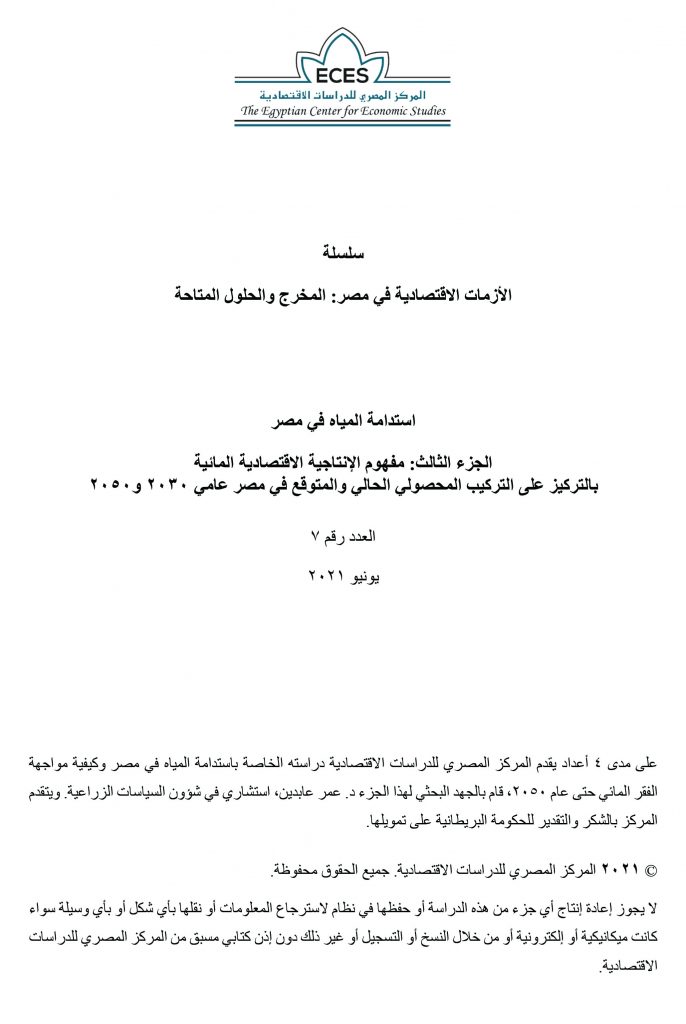Abstract:
Agricultural sector stakeholders in Egypt tend to maximize water use efficiency by choosing crops that use less water. And while growing more crops with low water consumption may seem optimal, it may not always be the best approach to maximizing economic returns. In fact, understanding the economic returns on each cubic meter of water consumed by different crops is no less important than identifying the crops that yield the greatest returns with the least water consumption, which is often overlooked. Therefore, when designing the crop structure, the water economic productivity (economic return on each unit of water consumed) of crops should be taken into account to achieve balance between their sufficiency at the local level and maximizing their economic returns at the same time, which is focus of this study.
In this context, this part of the study focuses on selected key strategic crops, and achieving higher levels of economic returns on the water available for irrigation, while providing the local needs of these crops. Water economic productivity, which is calculated by dividing the total value of the crop by the amount of water it consumes, is used as an indicator to evaluate these crops in order to design the crop structure of the main agricultural crops in Egypt.
The study found out that while some crops consume more water than others per unit of area, the total economic returns of these crops greatly exceed those achieved by other crops that consume less water. Therefore, the study finds it necessary to select and grow crops that generate maximum economic returns, while maintaining food security.

